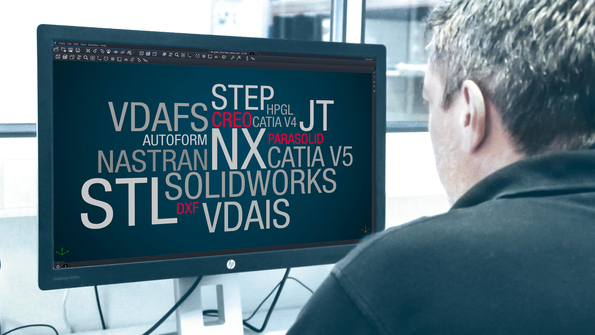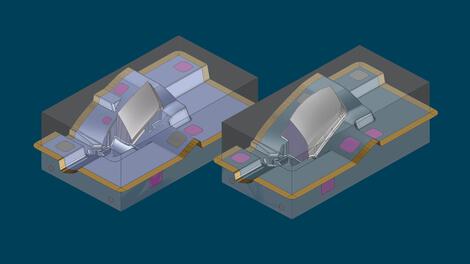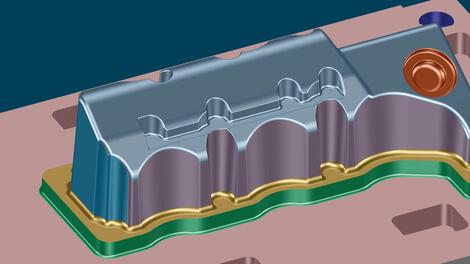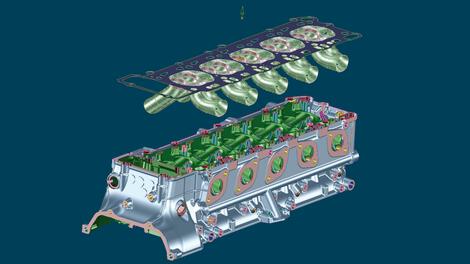-
Software
-
CAM software
- Tebis Automill
- CNC programming
- CNC automation
- CNC simulator
- Multiple setup
- Robotic machining
- CNC drilling
- Deep-hole drilling
- Combined turn-milling
- CNC turning
- Turn-milling
- 2.5D milling
- 3D milling
- 5-axis milling
- Slot milling
- Trimming
- HPC milling
- HFC milling
- Circle-segment cutters
- Sinker EDM
- Wire EDM
- 3D laser cutting
- Laser hardening
- Laser weld cladding
- CAD software
- CAQ software
- MES software
- Products
- Stories about parts
-
CAM software
- Services
- Consulting
- Sectors
- References
- Company
- News

-

CNC programming – automated and reliable
For shorter programming and setup time
The time between order receipt and delivery deadline in the manufacturing industry is becoming shorter and shorter. At the same time, components are becoming more complex, and surface quality requirements are becoming more demanding. Programming and setup must be performed in parallel with machine uptime, and multiple machines must be effectively coordinated. Fluctuating order quantities and a lack of qualified personnel are creating a demand for highly dynamic and easily automated processes.
Tebis combinesspeed, safety and a high degree of automation witht maximum flexibility in CNC programming and provides industry-specific solutions for all applications, like 2.5D, 3D and 5-axis machining. All CNC programming solutions can be combined together.Tebis lets you mill directly on surfaces or on meshes.
The manufacturing process with Tebis: You’ll prepare CAD data for CNC programming. You can use NC templates for highly automated CNC programming based on the structured data. Digital twins of your real tools, machines and clamping devices and the entire manufacturing knowledge of your company are stored in individual process libraries. If necessary, you can simulate and optimize the NC programs, which are then sent to the machine with complete collision checking.
Automated single-part manufacturingStore knowledge in standardized NC templates • Quickly train new employees • Respond fast to changes • Maintain a consistent quality standardMaximum reliabilityCollision-checked NC programs • Integrated simulation and verification • Virtual manufacturing environment with machines, tools, clamping devices and unitsMake ideal use of resourcesExternal setup and multiple setups • Optimal traverse movements • Lower tool costs thanks to consistent use of standard tools • Automated measurement and checking in the CAM systemImport design data
You can design with Tebis or import design data via interfaces. Tebis provides standard and direct interfaces to all common CAD systems. Not just geometric data on the blank, finished component and clamping devices but also structural information like assembly, layer, set and filter structures and colors can be imported. Drilling features as well as product and manufacturing information can also be imported. Tebis also has special interfaces, including reading in features, for simple CNC programming.
Preparing parts
You can ensure that only high-quality surfaces are milled during component preparation. You can analyze and structure the component. You can close holes, adjust transitions and create extension and overrun surfaces. You’ll benefit from standardized CAD templates that enable many of these work steps to be completely automated for different parts.
You’llsimultaneously establish the optimal prerequisites for automated NC programming:You can separate out elements and topologies, automatically split up milling areas and determine the appropriate manufacturing methods.You can also create clamping systems as CAD models for multiple setups. For electrode machining, the entire electrode is generated using a wizard. All machining information is automatically transferred to the model for prismatic machining or turning.
Logical operating sequences and automated CNC programming
CNCprogramming with Tebis is fast and straightforward. With the Job Manager and Tebis NCJob technology, you can create and manage all NC programs for all technologies you need for manufacturing a part – from milling and turning to hardening. It represents the complete manufacturing process with clearly structured operating sequences.
CAM machining templates support you in standardizing your CAM programming throughout your company. CAM programmers simply select the initial blank and collision bodies and start the automated CNC calculation. The best machining strategy for the selected machine is automatically assigned, with preference given to standard tools of the appropriate lengths based on the integrated collision avoidance strategies. Especially practical: Interactively defined milling areas from previous NCJobs are automatically applied. How to optimally use short tools: Milling areas that can’t be manufactured collision-free with short tools are transferred to the subsequent job, where they’re machined with a longer tool.
If desired, you can quickly and easily prepare a safe 5-sided machining operation.
Check the tilt direction with the integrated tilt direction preview and adjust it interactively. You can prepare the next component for CNC programming while programs are still being automatically calculated in the background.Optimize and output CNC programs
You can reduce the number of machining tools, adjust the automatically determined tool length if necessary, and if required, modify the clamping setup. Simulate the CNC program and check the machining again for collisions with all components in the CAM environment – including material removal simulation. If collisions are detected, have the milling areas automatically reduced or easily convert 3-access toolpaths into 5-axis simultaneous toolpaths. Output the NC programs as NC code with postprocessors precisely configured to your machines and controls.
View video / contact formPlease select the Preference cookies to activate the display.Activate cookiesMaterial removal simulation ensures safe and reliable collision control – the actual material on the model is reliably monitored at all times during machining and is checked against both the tool and all machine components. The blank is updated in each machining step.













